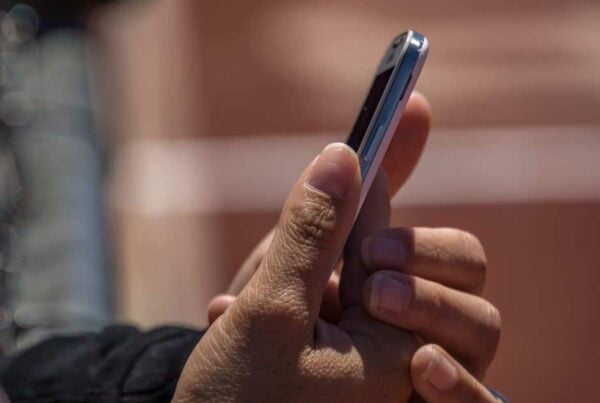Apple has made an astonishing success of its move into on-device contactless payments. Can it do the same in identity? Does it want to? Tim Green, MEF Programme Director for ID and Data, ponders the question…
Occasionally I like to do something that confuses Gen Z retail staff. I pay with cash. It’s a novelty for me and for them. Virtually everyone, myself included, just pays for their sandwich via the phone now.

We take this for granted, but it’s actually pretty extraordinary. Eleven years ago not many people paid with contactless plastic (especially in the US), never mind a dematerialised card. But Apple willed this new behaviour into the mainstream.
Its success has put Apple into pole position to leapfrog into identity. But so far, it’s made only small steps.
Back in 2021, Apple started its careful move into the identity space. It confirmed that eight US states would allow citizens to store official IDs and driver’s licences inside the Apple Wallet app. Today, 12 US states support the programme.
The next big move came this summer, when Apple confirmed that US passports would be coming to Wallet next. It described how the virtual passports would be usable at selected TSA checkpoints for domestic flights. It also flagged that the feature could be used for age and ID verification in physical locations with an NFC tap.
Apple’s success in payments has made it the giant of the wallet space. It has a simple and compelling use case with hundreds of millions of happy users.“
As ever, Apple has done a fantastic job of simplifying its messaging and its user journey. It describes the experience as follows:
“With your ID in Wallet, there’s no need to reach for your physical ID. Simply add it to the Wallet app and use it to show proof of age or identity at select businesses and venues.”
Go to https://learn.wallet.apple/id to see videos of the ID wallet in action – both online and in physical settings.
But hold on. Not everything has gone to plan. In late September iOS 26 arrived and…where was the support for digital passports? Nowhere to be seen. Turns out Apple has delayed the launch till later this year.
The postponement appears to show that this ID stuff is difficult to implement. But assuming the launch is coming, does it herald the start of Apple’s dominance in the identity space?
Certainly, Apple (like Google/Android) is well-placed to make a move. Which brings us back to the simple and friction-free payment experience.
I remember back in 2014 there were rumours that Apple was preparing to enter the payments space. Some of the speculation was wild. Exhibit A: Apple was going to put Bluetooth beacons in every store then monitor customers as they moved around the shop.
In the end, as we all know, this was nonsense. Instead, Apple’s move was simple: put a virtual contactless card in the phone. It’s been an insane success. According to Capital One…
- There are an estimated 65.6 millionApple Pay users in the US alone
- Apple Pay processed $6 trillion in payments in 2022 and produced a revenue of $1.9 billion.
- As of 2024, Apple Pay processed 14.2% of all online consumer payments
- More than 90 percent of US retailers accept Apple Pay.
Apple’s success in payments has made it the giant of the wallet space. It has a simple and compelling use case with hundreds of millions of happy users. This became the foundation for Apple Wallet to become the natural home for boarding passes, event tickets, hotel keys etc.
So will Apple now transition this payments use case over to ID? And if so, how?
Interestingly, 2024 saw Apple modify its payments strategy. It pivoted towards more collaboration. For example, it shut down its buy now, pay later (BNPL) service and instead partnered with BNPL specialists Klarna and Affirm.
It also ended its NFC exclusivity. This meant that third party banks and fintechs could finally offer ‘tap to pay’ from their own apps/wallets.
So if Apple does go hard into identity, will it similarly open up and allow third parties (nation states and independent wallet providers) to access its platform?
This is a big question with no clear answers yet. If we take the example of the EU Digital wallet, is it possible that it could be integrated inside Apple Wallet? The existing documentation implies not. But it’s not out of the question.
Then there are the users. Will they want to trust all their identity credentials to a single US tech giant? I’d argue, probably yes. Experience shows that most people park ethical and safety issues to one side if the UX is great.
Their sandwich journeys suggest it will be.
Find out more about the themes discussed – Join the MEF ID & Data Interest Group.





